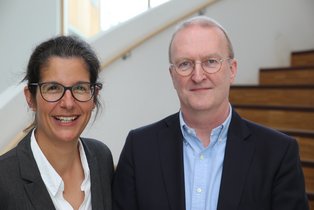Antibiotics research, abortion education and anatomy from the 3D printer
31 submitted applications, 9 invitations to pitch and 3 winning teams - this is the result of the competition announced by the Board of Trustees as the central funding body of the UW/H at the beginning of the year. The competition was looking for exceptional scientific projects and larger projects from student initiatives.
The following projects were selected for funding:
Medical Students for Choice Witten: The student initiative will receive 10,000 euros to raise awareness about abortion and help destigmatize it. Abortion is one of the most common medical procedures in Germany, but is not discussed in specialist medical training. This makes it all the more important for students to become active themselves. Among other things, they can use the funding to organize so-called papaya workshops, in which participants practise on a papaya how to safely perform a surgical abortion using vacuum aspiration (suction). The initiative also aims to provide holistic information on the topic and to look at the psychological, legal, political and ethical levels in addition to the medical one. Further information can be found on the UW/H Instagram channel.
Antibiotics research: The number of antibiotic-resistant bacteria is constantly increasing. For healthy people, contact with multi-resistant pathogens is generally harmless, but people with a weakened immune system are particularly at risk. In order to research new antibiotically effective substances and develop an antibiotic against resistant bacteria in the future, scientists from the Department of Pharmacology and Toxicology have received a grant of 20,000 euros. You can find more information about their research on the UW/H LinkedIn channel.
Anatomy from the 3D printer: As the number of human body donors on which human medicine students work during their studies is limited, Dr. Mona Eulitz and Priv.-Doz. Dr. Christoph Stückle have launched a special project at the UW/H: Some of the body donors are scanned in a computer tomography; from the data obtained, the students independently create high-quality virtual 3D models of the bodies from which they can learn. The Board of Trustees is funding the project with 30,000 euros so that it can be expanded in the future: The students' virtual 3D models are to be printed in a modern 3D printer. The authentic replicas of real bodies will help the budding doctors to understand anatomy and its diversity much more easily. Further information can be found on the UW/H website.
